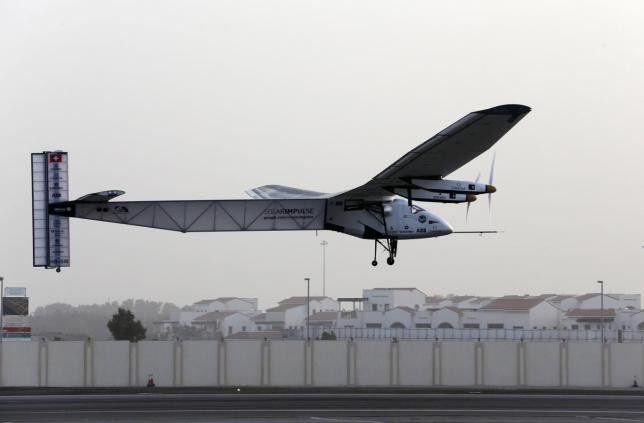A solar powered plane trying to complete the first around-the world flight had to stop the seventh leg of its 35,000 km (22,000 mile) global trek. The sun-powered plane was forced to end its six-day, six-night Pacific Ocean stretch and land in Nagoya, Japan due to bad weather.
Solar Impulse 2, the solar powered aircraft, will land in Nagoya at approximately midnight local time, according to Reuters. The plane, piloted by 62-year-old Andre Borschberg, departed from Nanjing, China, at 2:40 a.m. on Sunday, according to The Guardian.
Borschberg told reporters that he was crossing his fingers to cross the Pacific. He and Solar Impulse 2's crew had a "weather window" for the plane's voyage to Hawaii.
The plane's take-off had been delayed as the ground crew waited for ideal weather conditions due to safety concerns. Hawaii was the Pacific Ocean leg's destination.
Solar Impulse 2's six-day Pacific Ocean flight was expected to be the most challenging stretch. It was also the longest one at 5,270 miles (8,500 km), and had the opportunity to set the flight duration record for a single pilot.
During the Pacific Ocean leg, Borschberg flew at altitudes of 28,000 feet (8534 m), equal to Earth's highest peak, and temperature ranges of 55 degrees Celsius (nearly 100 degrees Fahrenheit). He could only take cat naps between checks of the plane's autopilot.
Borschberg's backup plan was quite limited. In the case of an emergency, the solar-powered airplane was only equipped with a parachute and a life raft.
The Solar Impulse 2 aircraft is attempting the world's first round-the-world flight by a sun-powered airplane. It took off from Abu Dhabi, United Arab Emirates (UAE) in March.
The trip of the solar cell-covered plane was expected to include 12 legs that lasted around 25 flight days. Solar Impulse 2 travels at speeds ranging from 50 to 100 miles per hour (50 to 100 km/h).




























